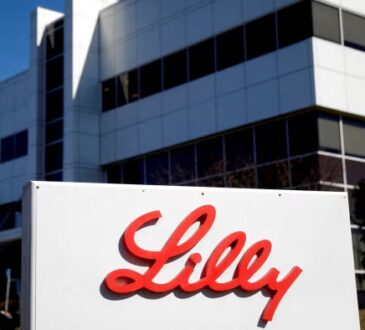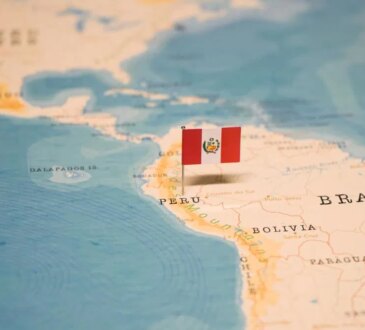Este artículo estará disponible en español en El Tiempo Latino.
Since his first full day back in office, President Donald Trump has repeatedly touted the value of announced financial investments in the U.S. and taken credit for attracting them. He started out citing $3 trillion in investments and, four months later, was claiming totals of more than $10 trillion.
It’s unclear where, exactly, he’s getting these totals. But they appear to be an exaggeration of pledges to invest made by various companies and countries. The total listed by the White House as of May 19 was about $6 trillion.
We’ll lay out what the president has said and explain what we know about the financial commitments that have been announced.
Trump’s Claims
On Jan. 21, the day after he’d been inaugurated, Trump said during a press conference, “Before the end of my first full business day in Washington in the White House, we’ve already secured nearly $3 trillion of new investments in the United States.”
This first instance of his claim about the amount of investments was already out of step with what the White House press office would say. A Jan. 24 news release describing the progress of Trump’s “first 100 hours” said that he had “secured over $1 trillion in historic new investments.“
By March, the president cited $5 trillion, saying during a swearing-in ceremony on March 28, “here we are in two months, we think we’re up to close to $5 trillion of investment.”
The following month, the total notched up to $7 trillion, a figure the president repeated several times. He finished the month claiming, in an April 30 Cabinet meeting, “after two months we have $8 trillion.”
In early May, the number climbed to $9 trillion, and, by May 8, when Trump was announcing plans for a trade deal with the United Kingdom, he said, “I think that we can say that we’ll do close to $10 trillion of investment. I think that we’re actually at that number now if you add up some of the ones you haven’t heard about yet.” Trump credited his policies on trade and tariffs.
“They have plants going up and they haven’t even spoken to us. They’re doing it because of the tariffs,” he said.
We asked the White House for an accounting of the investments that the president has been citing, but we didn’t get a response.
Since May 6, though, the White House has been keeping a “running list of new U.S. investment in President Trump’s second term” posted online.
What’s on the List
That list, which the White House describes as “non-comprehensive,” contains announcements of about $2 trillion in investments from companies — both domestic and foreign — and pledges of about $4 trillion from some countries to further invest in U.S. business.
But the list includes some investments that may not be attributable to Trump’s policies.
For example, plans for a $500 billion artificial intelligence infrastructure project were reportedly underway last spring, before Trump won the presidential election in November. A news story from March 29, 2024, reported that executives at OpenAI and Microsoft were discussing a “U.S.-based supercomputer, which they have referred to as ‘Stargate,’ as the biggest of a series of installations the companies are looking to build over the next six years.”
OpenAI officially announced the Stargate project — with different partners — on Jan. 21. The same day, the company’s CEO, Sam Altman, appeared at a White House press conference with Trump and said, “We wouldn’t be able to do this without you, Mr. President.”
A company spokeswoman confirmed to the Washington Post that Altman had been discussing plans for Stargate for at least 10 months before Trump took office. But she also said, “This deal at this magnitude only came together following the election as a result of heightened investor enthusiasm in anticipation of a Trump administration.”
Regardless of whether Trump’s election encouraged more funding for the project, it was conceived, and construction began, before Trump was elected in November.
Another example from the White House list of announced investments is a decision by Stellantis — a conglomerate that manufactures more than a dozen brands of vehicles, including Chrysler and Jeep — to reopen its Belvidere Assembly plant near Chicago.
The company closed the plant in 2023, but the reason for its reopening isn’t clear.
Stellantis Chairman John Elkann met with Trump and administration officials in January, shortly before the company announced it would reopen the plant, which is slated to start operation again in 2027. But others have taken some credit for Stellantis’ announcement.
The United Auto Workers, a labor union that had also been pressuring Stellantis to reopen the plant, took credit for the change.
And Illinois Gov. JB Pritzker, a Democrat, said, “My administration has worked tirelessly with our partners to secure this investment and we are excited to see it come to fruition.”
The list of investments pledged by foreign countries also includes some debatable claims.
For example, it says, “Japan announced a $1 trillion investment in the U.S.”
It’s true that Prime Minister Shigeru Ishiba said during a February visit to the White House that he was willing “to cooperate together to elevate Japan’s investment in the United States to an unprecedented amount of $1 trillion.”
But counting that as a new $1 trillion investment is a stretch. Japanese press reported that Japan would be “expanding” its 2023 investment “to $1 trillion in the future.” Japan has been the biggest foreign investor in the U.S. since 2019, according to data from the Bureau of Economic Analysis. In 2023, the most recent year for which there is data, Japanese companies invested $783 billion in the U.S.
So, Ishiba’s offer to encourage further investment in the U.S. would result in an additional $217 billion over the 2023 investment numbers. That’s less than one-quarter of the $1 trillion the White House has claimed.
What Do Economists Say?
Experts also have cautioned against taking the list — and Trump’s statements — at face value.
“There’s no guarantee that any of the investments that are announced actually come to fruition,” Adam Hersh, a senior economist at the left-leaning Economic Policy Institute, told us in a phone interview.
Various companies — or governments, for that matter — can announce that they plan to spend money building in the U.S., but any number of things could happen to halt a planned project before it’s actually built.
As economists, “we wouldn’t count them until they’re actually in the ground,” Hersh said of evaluating the economic impact of the listed projects. “Until they actually happen, it’s just a lot of hot air.”
Scott Lincicome, vice president of general economics at the libertarian Cato Institute, said something similar in a recent analysis of the Trump administration’s claims that its tariff policies are driving these announced investments.
“[T]hey’re just promises—and often vague ones at that,” Lincicome wrote of the announcements from companies, giving two examples of announcements that included no time frame and very few, if any, specifics about the projects.
“Companies often will make announcements to essentially curry favor with an incoming administration to show how committed they are to the United States,” Nick Nigro, the founder of Atlas Public Policy, which tracks clean energy investment in the U.S., told CBS News earlier this month. “It’s not unusual whether it was President Trump or President Biden or President Obama.”
Also, many of these pledges — like the one from OpenAI — are for investments over a series of years, not to be realized this year.
To put this in context, in 2024, which was a record year for building manufacturing facilities, the U.S. had $3.5 trillion in non-residential investment, which includes building structures, equipment, and research and development investments, Hersh said, citing data from the Bureau of Economic Analysis.
“So, I don’t see this $10 trillion [claim by Trump] as a real number,” he said.
Editor’s note: FactCheck.org does not accept advertising. We rely on grants and individual donations from people like you. Please consider a donation. Credit card donations may be made through our “Donate” page. If you prefer to give by check, send to: FactCheck.org, Annenberg Public Policy Center, P.O. Box 58100, Philadelphia, PA 19102.




